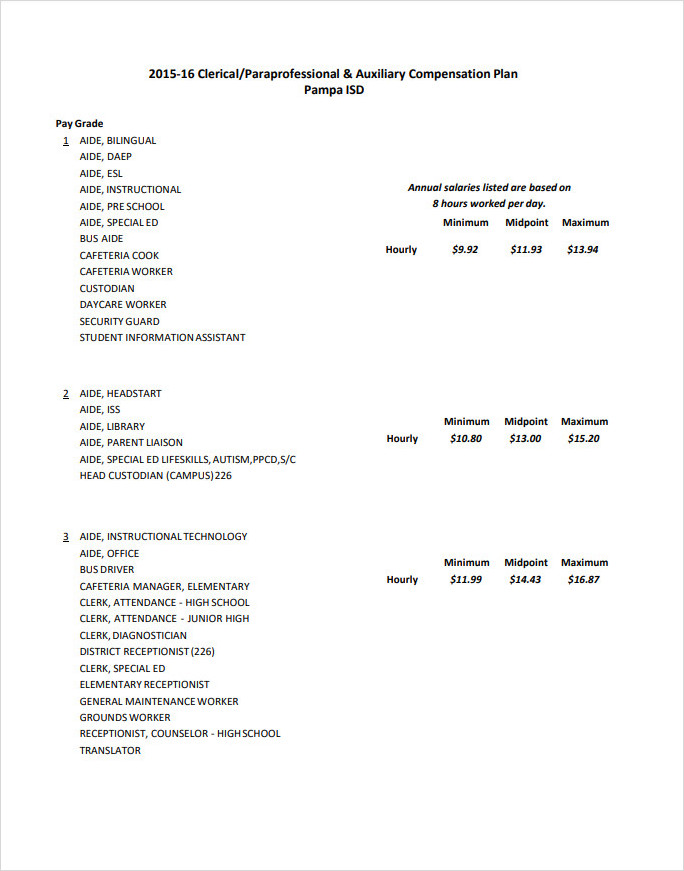
A compensation plan is a crucial component of any business. It outlines how employees will be rewarded for their efforts and contributions to the company. A well-designed compensation plan can motivate employees, attract top talent, and increase employee satisfaction. One effective way to communicate the details of a compensation plan is through a version.
This article will explore the benefits of a compensation plan and provide tips on how to create one that is effective and easy to understand.
What is a Compensation Plan?
A compensation plan is a document that outlines how employees will be compensated for their work. It typically includes details such as base salary, bonuses, commissions, benefits, and any other forms of compensation that employees may receive.
This document can be printed and distributed to employees, making it easily accessible and allowing employees to refer to it whenever needed.
Why Use a Compensation Plan?
There are several reasons why using a compensation plan is beneficial for both employers and employees:
- Clarity: A compensation plan provides clear and concise information about how employees will be compensated. It eliminates any confusion or misunderstandings that may arise when discussing compensation verbally.
- Transparency: By providing employees with a printed document, employers demonstrate their commitment to transparency. Employees can see exactly how their compensation is determined and understand the criteria for earning bonuses or other incentives.
- Accessibility: A compensation plan can be easily accessed by employees whenever they need to review their compensation details. It eliminates the need to search through emails or ask HR for information.
- Reference: Having a printed compensation plan allows employees to refer to it during performance reviews or when discussing compensation with their managers. It serves as a valuable reference tool for both employees and managers.
How to Create a Compensation Plan
Creating a compensation plan involves several key steps:
- Define your compensation philosophy: Before creating a compensation plan, it’s important to define your organization’s compensation philosophy. This includes determining the desired pay levels, market competitiveness, and the balance between fixed and variable pay.
- Identify key components: Determine the key components of your compensation plan, such as base salary, bonuses, commissions, and benefits. Consider the specific needs and preferences of your employees.
- Set performance metrics: Establish clear performance metrics and goals that will be used to determine bonuses or other incentives. Ensure that these metrics are measurable, attainable, and aligned with the organization’s goals.
- Communicate the plan: Once the compensation plan is developed, communicate it to employees clearly and concisely. Provide them with a printed copy of the plan and explain how it works.
- Review and update regularly: Compensation plans should be reviewed and updated regularly to ensure they remain competitive and aligned with business objectives.
Example of a Compensation Plan
Here is an example of how a compensation plan might look:
















Tips for Successful Implementation
When implementing a compensation plan, consider the following tips:
- Keep it simple: Make sure the compensation plan is easy to understand and avoids unnecessary jargon or complexity.
- Provide explanations: Include explanations or definitions for any terms or acronyms used in the compensation plan to ensure clarity.
- Seek feedback: Ask employees for feedback on the compensation plan to identify any areas that may need improvement or clarification.
- Update regularly: Regularly review and update the compensation plan to ensure it remains competitive and aligned with business goals.
- Train managers: Train managers on how to effectively communicate and explain the compensation plan to their teams.
- Be transparent: Encourage open and honest communication about compensation and address any concerns or questions employees may have.
Free Compensation Plan Template!
A compensation plan is a valuable tool for both employers and employees. It provides clarity, transparency, and accessibility, making it easier for employees to understand and navigate their compensation.
By following the steps outlined in this article and considering the tips for successful implementation, you can create a compensation plan that effectively communicates your organization’s compensation structure and motivates your employees to perform at their best.
Compensation Plan Template – Download